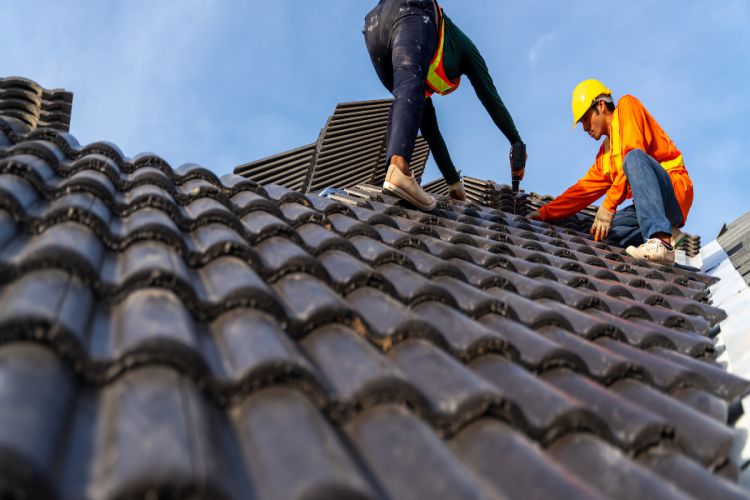 The warm climate and scenic skies are among the reasons that make Central Florida living so attractive. However, the same climate that draws residents and businesses is also very brutal to the roofing systems. Roofs in Lakeland have to deal with some of the most challenging weather conditions, including:
The warm climate and scenic skies are among the reasons that make Central Florida living so attractive. However, the same climate that draws residents and businesses is also very brutal to the roofing systems. Roofs in Lakeland have to deal with some of the most challenging weather conditions, including:
- Hurricane season winds
- Intense UV rays
- Sudden downpours
- High humidity throughout the year.
It is these stress factors that will give you insight into how to prolong the life of your roof and save you the huge repair expenses. These are the most common roofing issues in Lakeland and what you can do about them.
Storm wind damage and shingle uplift
Although Lakeland is inland, it is affected by tropical storms and hurricanes. Strong summer thunderstorms may also cause unexpected wind gusts that cause havoc to roofing materials.
When the wind passes under a shingle, it may tear it off completely. It might also create a wave effect, which will affect even more areas. On metal or tile roofs, wind may loosen fasteners or dislodge tiles. That results in channels through which water can enter.
Prevention tips
- Select a roofing material with a great wind uplift rating. It should be certified to Florida building codes.
- Check roofing fasteners and shingle seals once a year prior to storm season.
- Check the roof after any storm to see if there are any missing shingles or tiles that have moved.
Leaks, broken flashing, and sealants
Water intrusion is the most prevalent roofing problem in Florida. Most leaks of the roofing material are usually not caused by the roofing material, but as a result of loose areas such as:
- Flashing
- Seams
- Skylights
- Vents
- Chimneys.
With time, the sealant applied to protect these places may crack because of exposure to the sun or thermal activity. Flashing can corrode or detach itself. Even small holes can cause rainwater to leak in.
Prevention tips
- Let a professional Roofing Company Lakeland FL check all flashing and penetrations once a year.
- Ensure that sealants and caulking are those that resist UV and adapt to the climate in Florida.
- Observe any water spots, damp odor, or bubbling paint in your building. These are signs that you have a leak.
Ponding water on low-sloping or commercial flat roofs
In the case of commercial properties in Lakeland, water that does not drain well is one of the biggest risk factors. These buildings are likely to have flat and low-slope roofs. When Florida is experiencing downpours, water may accumulate in low areas and remain there for days.
This is referred to as ponding, and it increases:
- Membrane wear
- Strained seams
- Weight
- Vegetation growth.
Prevention tips
- Make sure your roof is well-tapered and drained.
- Clean out gutters and scuppers.
- After storms, take care of bird baths or places where water stagnates.
Algae, mold, mildew, and moisture intrusion
The humidity in Florida is merciless, and it reflects on roofs. On residential asphalt shingle roofs, it commonly appears as dark streaks or discolouration – usually growth of algae. Algae is not usually harmful to the structure, but it looks unsightly. On the contrary, mold and mildew might retain moisture on the roof. This increases the rate of:
- Blistering
- Rot
- Insulation decay.
Prevention tips
- For homes, go with algae-resistant granule shingles or use soft-washing often to remove growth.
- Make sure the attic is well ventilated to avoid moisture accumulating in the interior.
- Commercial buildings ought to undergo regular infrared moisture scans to identify water under the membrane.
Thermal stress and UV degradation
The roofs of Lakeland are exposed to harsh sun rays, almost all year round. UV rays degrade roofing materials. They result in:
- Brittle shingles
- Dull tiles
- Dry or cracked membranes.
To worsen the situation, the roofs swell during the day in the heat and contract at night. Over the years, this continual heat/cool process can:
- Loosen fasteners
- Warp metal flashing
- Create openings in seams.
Prevention tips
- Use retractable UV-resistant materials and reflective finishes (also referred to as cool roofs).
- Metal and TPO roofing can withstand the effects of thermal expansion when installed correctly.
- Use protective coating to lengthen the life of old flat roofs or metal roofs.
Bad installation and workmanship flaws
Even the toughest roofing material will not be able to withstand the climate in Florida when it is poorly installed. Installation errors that are common in Lakeland are:
- Wrong venting or underlayment
- Improperly fixed flashing
- Weak fastening or fastening patterns
It is a shame that most roofing issues that get reported as being caused by storms are merely installation flaws.
Prevention tips
- Make sure that you employ a certified roofing company in Florida.
- Inquire about wind-uplift fastening and code compliance.
- Seek warranties of materials and labour.
The takeaway
The weather at Lakeland is not going to be any better on the roofs. However, you can mitigate the above stresses through regular check-ups, prompt maintenance, and wise materials selection. Engage a roofing expert who is aware of local weather issues, and your roof will be sturdy during all storm seasons.
